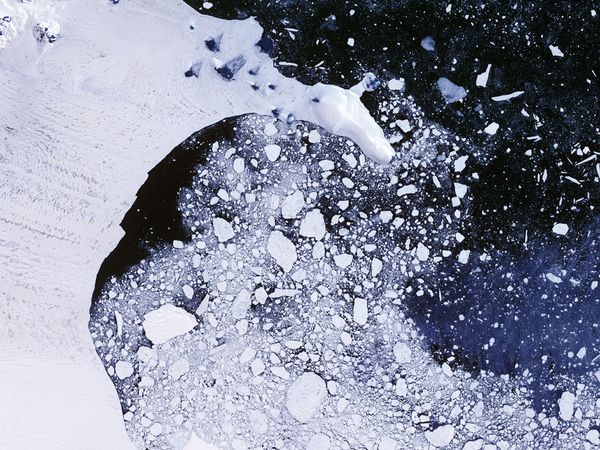The ongoing dispute of climate change has brought relevance to CO2 emissions, depletion of the o-zone layer, changes in global temperature, and an influx in ocean volume. As discussed by Duncan Wingham in the article “Polar Scientists on Thin Ice,” there has recently been evidence to support that Antarctica’s ice sheet has been melting, potentially leading to a rise in sea level. Dr. Wingham states that if all of Antarctica’s ice were to melt, the change in water elevation would cover a vast majority of the lowlands that are homes to millions of people and agricultural land that feeds tens of millions of people. (2007, Wingham)
However, as Wingham explains there is strong evidence to support that Antarctica is not in fact melting. He states that a research station set up by the United States in the Antarctic has actually reported local temperatures decreasing over the past fifty-years. Also, Dr. Wingham’s collection of satellite data provides evidence that Antarctic ice thinning is as common as thickening. These findings are used to explain the recent collapse of a 1600 squared kilometer ice shelf. Wingham states that the collapse could be attributed to an ocean current fluctuation as opposed to global warming. In addition, the satellite data has observed that in the East and West of the Antarctic ice sheet it is growing in each direction by 5 millimeters a year. According to the author’s estimates this growth of the Antarctic ice sheet will lower sea levels by 0.08 millimeters a year.
Duncan Wingham attended Leeds and Bath Universities where he completed a Bachelor in Science and a PhD in Physics. He is currently the head of the Department of Earth Sciences and a chair member of the Department of Space and Climate. Also, Dr. Wingham is a member of the National Environmental Research Council’s Science and Technology Boars and Earth Observation Experts Group. In addition, he is a director of the NERC Centre for Polar Observation Experts Group.
Dr. Wingham provides a strong argument to convince the reader that climate change is not causing a depletion of the Antarctic ice sheet. His research analyzes the entire ice sheet of Antarctica as opposed to focusing on specific sections. However, Wingham does not disprove the evidence his colleagues have collected that support climate change theories. Wingham engages in using the either/or fallacy, by not suggesting that the changes in the ice shelf could have been due to a combination of climate change and current fluctuation. Duncan Wingham proposes a different idea as to what could be causing changes in the Antarctic, one that should be considered by other scientists since it could impact research of climate change.
Works Citied
NASA. Larsen B Ice Shelf Breakup. 2002. Photograph. National Geographic, Antarctica. National Geogrphic. Web. <http://environment.nationalgeographic.com/environment/photos/antarctica-gallery/#/larsen-b-iceshelf_265_600x450.jpg>.
Wingham, Duncan. “Polar Scientists on Thin Ice.” The National Post. Canada.com, 2 Feb. 2007. Web. 11 Jan. 2012. <http://www.canada.com/nationalpost/story.html?id=b228f4b0-a869-4f85-ba08-902b95c45dcf&k=0>.

